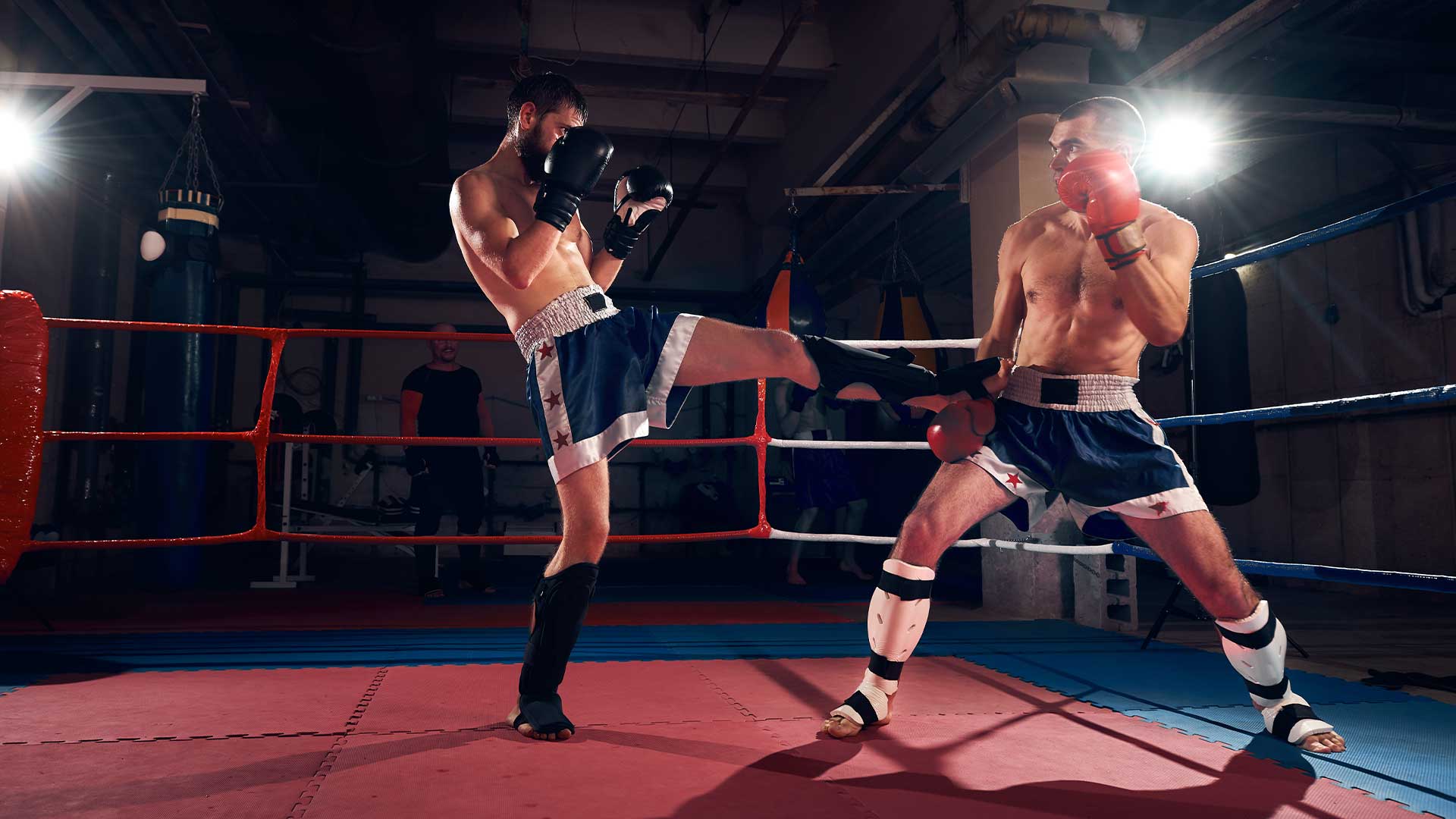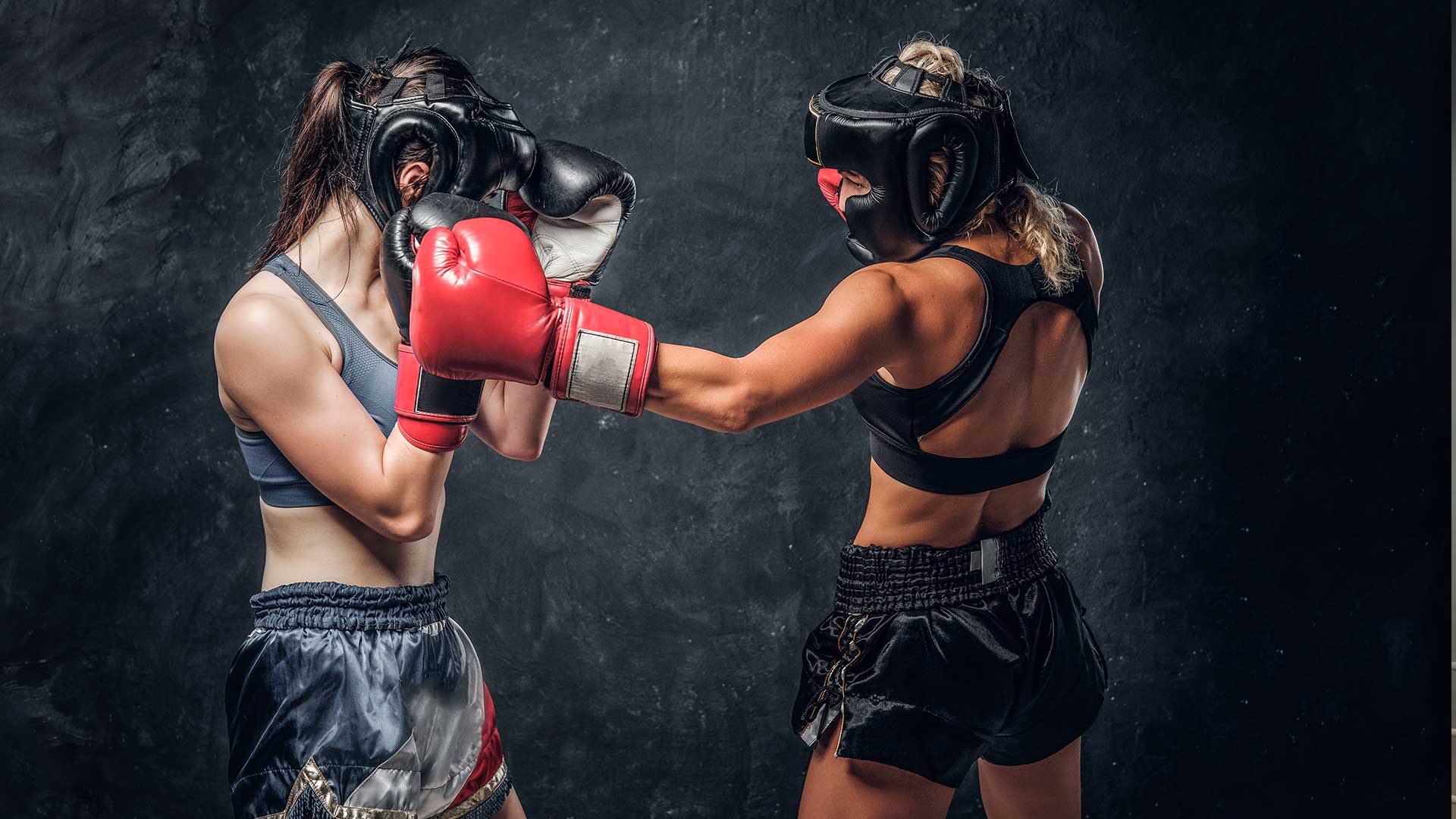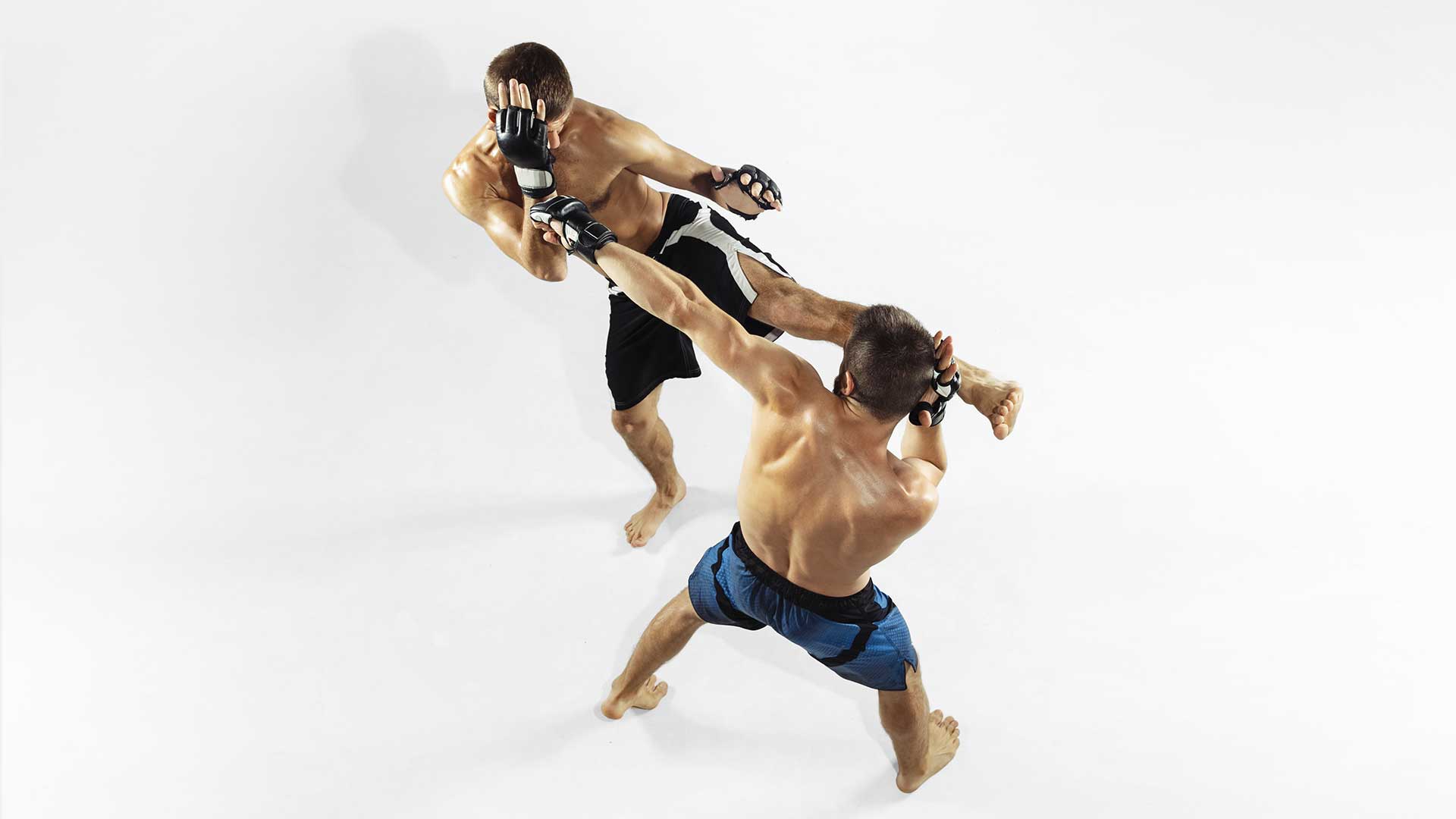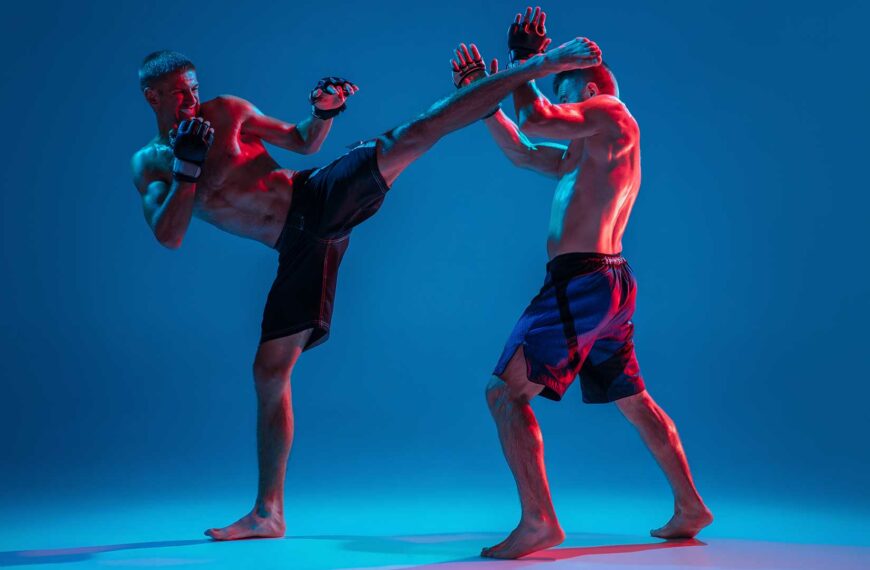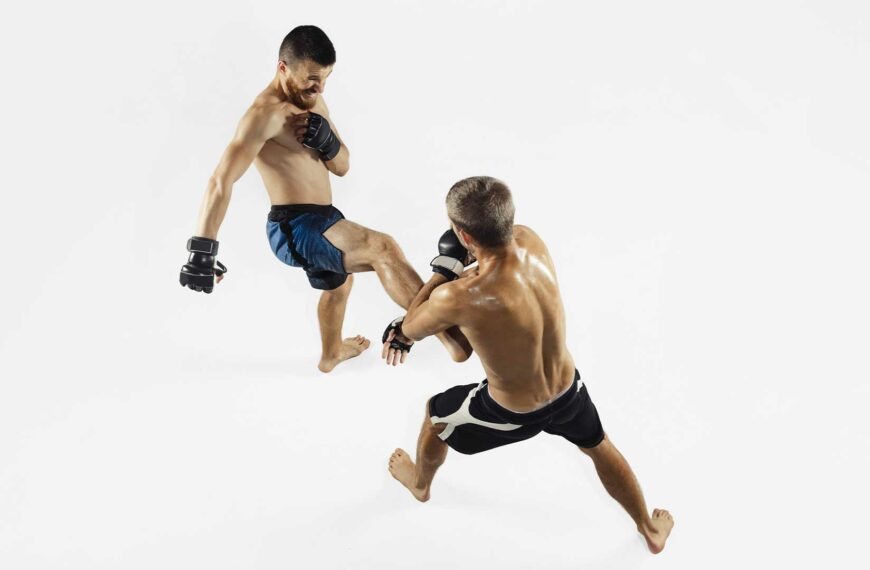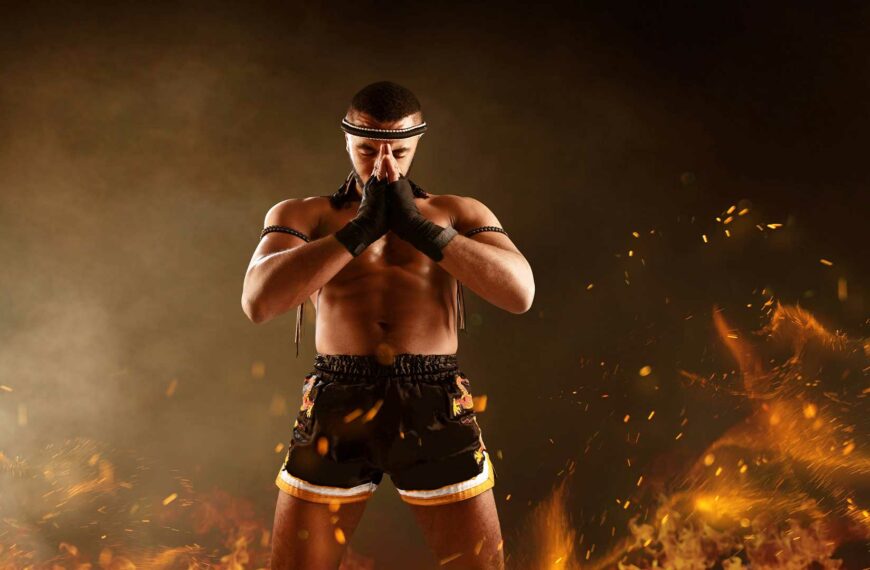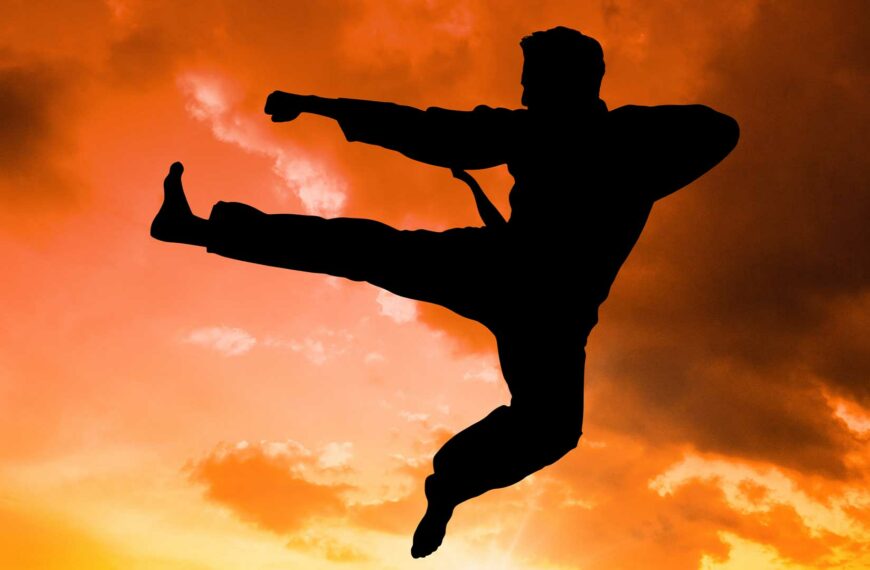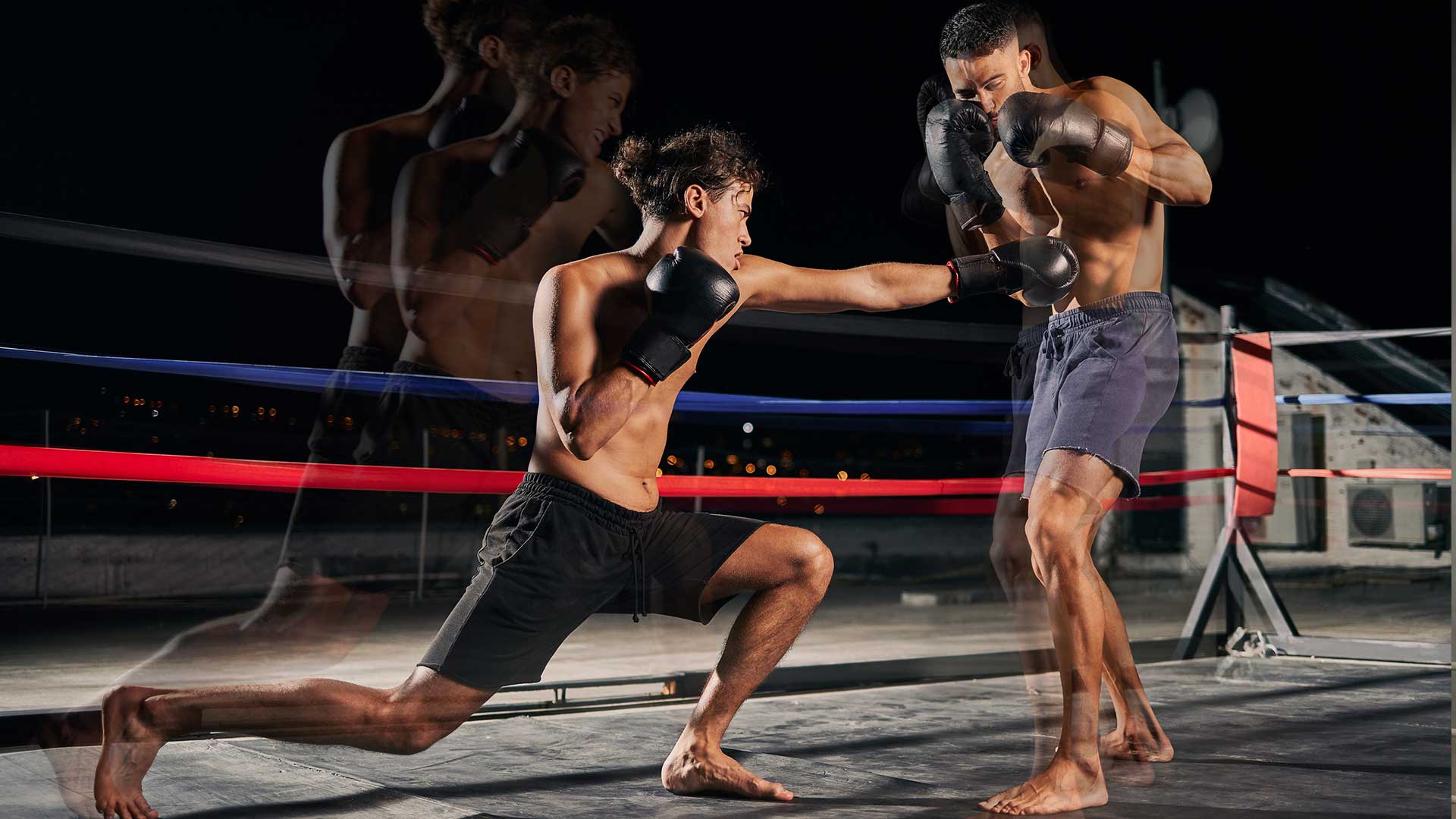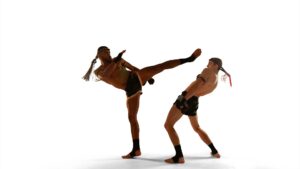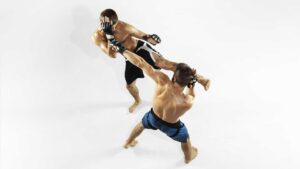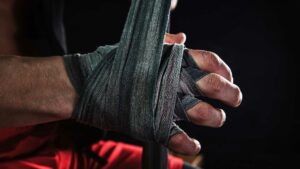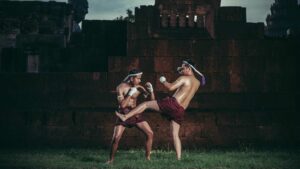Muay Thai, the art of eight limbs, is not just a sport; it’s a narrative played out in the ring, chapter by chapter, punch by punch. Understanding how to decipher the key phases of a Muay Thai fight is akin to learning a new language, one where every movement and moment has significance. This guide is your Rosetta Stone to the world of Muay Thai, designed to introduce fitness enthusiasts and newcomers to the exhilarating drama that unfolds in the ring. So, lace up your gloves, and let’s dive into the heart-thumping world of Muay Thai.
Learn the 5 phases of a Muay Thai fight
- Wai Kru: Traditional dance to honor teachers.
- Round progression: Intensity increases each round.
- Summary: Phases showcase strategy and skill progression.
1. The Wai Kru
The Wai Kru is more than just a pre-fight ritual; it’s a profound expression of respect, tradition, and spirituality that sets the stage for the battle to come. This ceremonial dance, performed to the haunting strains of traditional Thai music, is a fighter’s way of paying homage to their trainers, the sport’s ancient warriors, and the sacred art of Muay Thai itself.
For spectators, the Wai Kru is a mesmerizing introduction to the cultural depth of Muay Thai, offering a glimpse into the soul of the sport. As a fighter, performing the Wai Kru is a moment of introspection, preparation, and a declaration of readiness. It’s a reminder that Muay Thai is not just about physical prowess but also mental fortitude and spiritual harmony.
2. The First Round
The first round of a Muay Thai fight is akin to the opening moves in a game of chess. Fighters use this time to size up their opponents, testing defenses and gauging reactions with probing jabs and low kicks. It’s a strategic phase, where each combatant seeks to understand the other’s style, strengths, and potential weaknesses.
In my first Muay Thai fight, I remember the overwhelming mix of adrenaline and caution as I stepped forward, throwing tentative kicks and punches, trying to read my opponent’s responses. It’s a round of discovery, where fighters begin to lay down the foundational strategies they hope will lead them to victory.
3. The Second Round
As the fight progresses into the second round, the pace begins to quicken. Fighters start to unleash more aggressive combinations, ramping up the intensity. This is where the initial assessments made in the first round start to play out in the form of more confident strikes and maneuvers.
In the second round, fighters are also looking to assert dominance, to send a clear message to their opponent, and perhaps more importantly, to the judges. It’s a critical phase where the fight can start to tilt in one direction, setting the tone for the remaining rounds.
4. The Third Round
The third round is often where the heart of the fight lies. By now, fighters are fully engaged, deploying their best techniques with power and precision. This round is characterized by its ferocity, with both fighters striving to establish a clear lead.
For me, the third round of my fights was always about resilience. It’s a test of conditioning, technique, and willpower. Fighters must balance aggression with strategy, pushing forward without leaving themselves vulnerable to counterattacks. It’s in this round that the fight’s momentum can dramatically shift, based on a single well-placed strike or a successful defensive maneuver.
5. The Fourth and Fifth Rounds
The final rounds of a Muay Thai fight are where legends are made. Fatigue sets in, and the physical toll of the preceding rounds becomes evident. However, it’s also when the true spirit of Muay Thai fighters shines brightest. These rounds are about heart, determination, and the unyielding will to emerge victorious.
In the fourth and fifth rounds, fighters must dig deep, often pushing beyond their perceived limits. Strategies may shift as they look for openings to exploit or weaknesses to attack. It’s a thrilling climax to the fight, where technical skill, mental toughness, and sheer grit converge.
In Summary
Understanding the five phases of a Muay Thai fight offers a window into the complexity and beauty of this ancient sport. From the spiritual beginnings of the Wai Kru to the strategic exchanges of the opening rounds, and the climactic battles of the final moments, each phase is a story in itself.
For those new to Muay Thai, witnessing these stages unfold is an exhilarating introduction to a sport that is as much about personal growth as it is about competition. Whether you’re stepping into the ring or cheering from the sidelines, the journey through a Muay Thai fight is a profound exploration of strength, skill, and spirit.
As you delve deeper into the world of Muay Thai, remember that each fight is a unique narrative, a blend of tradition, technique, and tenacity. So, to all the fitness enthusiasts and newcomers to the sport, embrace the journey, and may the spirit of Muay Thai inspire you in every aspect of your life.
For those looking to learn more about mastering this art, consider exploring our other resources:
- How Do You Master Muay Thai?
- Muay Thai Basic Moves
- How to Learn Muay Thai: 10 Steps
- Muay Thai vs. Kickboxing: Understanding the Differences
- The Rich History of Muay Thai
- Famous Muay Thai Fighters and Their Legacy
- Exploring Muay Thai Techniques
- What Are Muay Thai Fighters Called?
- Understanding Muay Thai Injuries and How to Avoid Them
- Tips and Techniques for Muay Thai Practitioners
Embrace the challenge, respect the tradition, and live the spirit of Muay Thai.
Questions
Who determines the key phases of a Muay Thai fight?
The fighters themselves, based on their strategies and tactics.
What are the main phases of a Muay Thai fight?
The main phases include the opening, clinch, striking, and closing stages.
How can one analyze the key phases of a Muay Thai fight?
By observing the transitions between each phase and the fighters’ techniques.
What if I find it hard to identify the key phases in a fight?
Watching more fights and seeking guidance from experts can help clarify them.
How important is it to understand the key phases of a fight?
Understanding the phases helps fans appreciate the technical aspects and strategies involved.
What if I prefer to focus on just enjoying the fight without analyzing it?
That’s perfectly fine! Everyone can enjoy Muay Thai fights in their own way.
